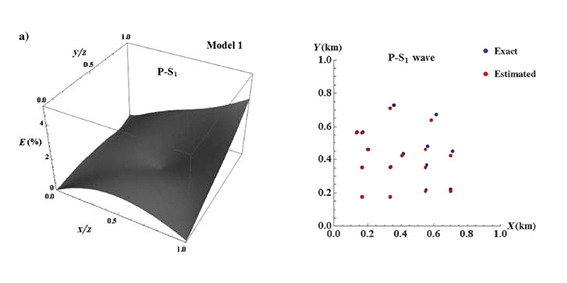self-introduction
社会基盤工学専攻 助教 徐 世博

I am very honored to be part of Kyoto University,which is what I hoped from childhood. I was born in a small town on the border between China and North Korea, Northeast China. Thanks to the poor residence place, my parents could be exempted from the One-Born Policy although they already had a daughter (my elder sister) at that time. Due to the large population in China, the fierce competition needs to be faced with especially for children from the countryside since entering a good university is the only way to leave their hometown for a better life. I’m very lucky to go to a good University (Jilin University), which has made me a different life with those people in my hometown.
My initial impression of Japan was from a book 《Chrysanthemum and the Sword》 in my high school and the animations imported from Japan. Although China and Japan are very close in distance, the custom is very different even opposite. In my mind,Japanese men are the hardworking people strict in behavior and rigorous in jobs and Japanese women are all gentle and virtuous. To see the Sakura blossom in Kyoto has always been my dream from my childhood. After my graduation from my Master, I got the opportunity to study for the PhD at the Norwegian University of Science and Technology (NTNU) with a full scholarship. This is my first time to go abroad to know the world with my own eyes. Northern Europe is a very rich place especially in Norway, which enjoys the top welfare from its oil industry. In such a comfortable environment, I can devote all my energy to scientific research with the help of my supervisor Prof. Stovas. He is a very kind person and has helped me a lot in my studies and life. Every time I think of him, my heart is always full of gratitude.
Before I graduate from NTNU, I met Prof. Mikada at an international conference in Europe. I try to seek the possibility to go to Kyoto University as a postdoc. It is feasible to go to Japan through the Japan Society for the Promotion of Science (JSPS) funding. However, every story is full of twists and turns, I failed twice and had to go to Canada at the University of Calgary as an alternative. After working there for four months, I was informed of an opportunity to go to Kyoto as an Assistant Professor. What a surprise! Our lives are full of exciting uncertainty, you never know what happens next. From 1st July 2019, my life in Japan starts at Kyoto University.
My research is mostly on the seismic processing in the Exploration Geophysics like the wave propagation, seismic modeling, and the inversion.As the existence of the anisotropy, the properties like velocity, geometrical spreading and amplitude have a different behavior compared with those in the isotropic model. Working in the Geophysics lab is full of challenges and surprises. I need to complete the transformation from student to faculty and get used to Japanese society and culture. This is a new environment and custom, which is different from the one in China, Europe and North America. It's a challenging life not only working hard on research but also changing the habits. Luckily, I got a lot of help from our faculty members in our lab: Prof. Mikada, Prof. Takekawa and Ms. Kamei, especially Figure Prof. Mikada, he always helps me patiently in all aspects. I will definitely work hard to return for his trust. I look forward to working with colleagues at Kyoto University to contribute to a better future.
(社会基盤工学専攻)
(1)Anisotropy parameters estimation

Figure 1. (a) The common image gather when using the isotropic RTM. (b) The semblance plot computed for factorized model. The anisotropy parameters can be evaluated from the coordinates of the maximal value of the semblance plot.
Xu S, Stovas A and Alkhalifah T, 2016,Estimation of the anisotropy parameters from imaging moveout of diving wave in a factorized VTI medium, Geophysics, 81, C139-C150
(2)Conversion point imaging

Figure 2. (left) The relative error in conversion point position versus offset-depth ratios for the converted PS wave in elastic orthorhombic (ORT) model. (right) The estimated conversion point position for a converted wave.
Xu S and Stovas A, 2019, Estimation of the conversion point position in elastic orthorhombic media, Geophysics, 84, C15-C25.
(3)New parameterization for orthorhombic model

Figure 3. (left) The sketch for new parameterizations for ORT model. (right) The relative error in traveltime for parameterizations.
Xu S and Stovas A, 2017, A new parameterization for acoustic orthorhombic media, Geophysics, 82, C229-C240.
